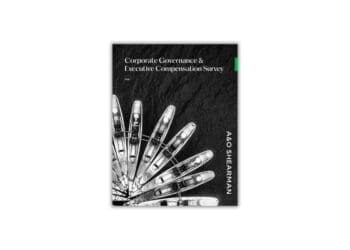Effective leaders understand that boards are comprised of people with different skills and areas of expertise – often without the acumen to understand the details of security and risk the way a security or risk professional does. Lockpath’s Sam Abadir offers guidance on bridging that gap.
Communicating risk posture and assessments to the highest levels of an organization is a demanding and increasingly pivotal responsibility in businesses that rely on information technology. In a world where new threat vector and information risks proliferate, every CISO must be skilled in communicating the value of IT security to the business. By presenting this connection to the board, information chiefs show the role risk plays in the business and how information risk plays a role in fulfilling overall corporate objectives.
The risk management and governance work performed by CIOs, CROs, CISOs and their teams is central to the security of enterprise assets, data, supply chains, services and customers. It’s not just about checking boxes on compliance and audit preparation. When governance, risk management and compliance (GRC) programs are properly implemented, they strengthen and protect every facet of the enterprise. Managing security, IT and corporate policies becomes more integrated and efficient, closing gaps created by silos of data, systems and functions.
The biggest challenge for CISOs is finding a way to communicate risk in a way that everyone on the board understands. It’s a lot easier to convey risk assessments to executives and boards if everyone is speaking the same language. With a holistic risk profile correlated to business metrics, processes and goals, CISOs can select which risks need to be presented to the board — the ones with the highest probability and impact.
They can also calculate what it would cost should the risk become reality. How would the company be affected, and for how long? How much would it cost for remediation? How much revenue and reputation would be lost? Speaking in dollars and cents goes a long way to bridging the gap between IT and the board of directors. Getting everyone on the same page through regular reporting and unified risk assessments also fosters the collaboration and top-down security and compliance culture that are the hallmarks of mature enterprises.
Reporting about a “SIEM alert” could easily alienate even the most IT-friendly board member, or at a minimum, leave them confused about how it will impact the business. It is important to avoid jargon and communicate in comprehensive terms that correlate to corporate objectives and business value.
Most businesses will likely have a good idea what the risks to their business operations and processes are, but they might not understand them in terms of information security, governance and compliance. By associating IT risks with business objectives, processes and goals, the board can assign a dollar amount to these risks and better understand the impact they will have to the bottom line and organizational growth. A GRC platform is extremely useful for CISOs, as it can aggregate data from both operational and IT aspects of the business to efficiently provide this context.
Visibility is a huge issue in most organizations. It’s a buzzword, but think about what it really means and how hard it is to “see” everything in a complex, technology-powered organization. Multiply the difficulty if you work at a large, multinational corporation with a sizable technology footprint. As a C-level executive, the board expects you to be the eyes and ears.
You need a watchtower, not a spreadsheet.
If you don’t have an inclusive inventory of technology assets — data, hardware, software and devices— then you only have a partial risk picture. Mature GRC programs can combine data from across the technology landscape to create a true asset management database and then integrate vulnerability scans, configuration and SIEM data, threat intelligence feeds and incident reports in order to map relationships between assets, risks, policies and compliance requirements. This provides a holistic view of risk.
Indeed, one of the primary benefits of comprehensive integrated risk management (IRM) is the ability to aggregate data on assets and their associated risks from across the enterprise. Then check it against policy benchmarks, threat intelligence sources and compliance databases on a GRC platform. In turn, centralizing the data makes reporting easier, and reports can even be customized based on the different needs, roles, levels of knowledge and responsibilities of stakeholders. Automation (e.g., workflow, monitoring, remediation) and advanced analytics are essential GRC capabilities that facilitate more complete and accurate risk assessments.
Once you can connect, analyze and report on these relationships in a centralized framework, you can begin the real work of risk management: aligning risks to business value so that you can plan and prioritize compliance and remediation workflows effectively. This is how you get to the context, evidence and business value justifications the board requires when addressing risk.
An enterprise can only move toward risk management maturity and optimization by taking strategic approaches rather than merely tactical ones. Many IT departments do not know enough about how non-IT operations create value, or even what specific type of threat or incident would cause the costliest damage. GRC platforms map vulnerabilities to assets, risks, compliance activities and business value so that it becomes possible to track key risk indicators as carefully and contextually as key performance indicators. Each company has a unique risk profile; those with the most accurate self-awareness know which risks they can accept and which lines they cannot cross.



 Sam Abadir is Vice President of Industry Solutions at
Sam Abadir is Vice President of Industry Solutions at 









